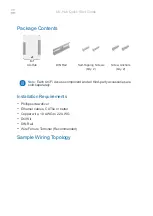
BankGuard PLUS
S&C Electric Company
Control
Proprietary Information
14
Operation
1011-540 5-17-04
explanation of how the value is calculated). During each control cycle, the stored
magnitude correction factor is subtracted from the real-time neutral-to-ground magnitude
to obtain a compensated neutral-to-ground voltage magnitude. Capacitor unit failures will
cause the real-time line-to-neutral voltage to change and, therefore, change the
compensated neutral-to-ground voltage magnitude.
The control compares the compensated neutral-to-ground voltage magnitude to the “Gross
Over Voltage Level,” “Lockout Level,” and “Alarm Level” setpoint values, if enabled. If
the compensated neutral-to-ground voltage magnitude exceeds a setpoint value
continuously for a time greater than the applicable time delay setpoint value, the
appropriate control action is taken. The control will lock out the bank if the “Gross Over
Voltage Level” or the “Lockout Level” setpoint values are exceeded. The control will
issue an alarm if the “Alarm Level” setpoint value is exceeded.
For grounded wye banks, the control device uses tap-voltage calibration logic. This logic
develops the sum of the intermediate tap-point voltages on the 3 phase legs, as monitored
by the S&C 30-Volt-Ampere Potential Devices. A digital filter attenuates harmonics and
noise.
•
When the Unbalance Compensation feature is disabled, the magnitude of the sum of the
intermediate tap-point-to-neutral voltages is compared (in percent) with the “Gross Over
Voltage Level,” “Lockout Level,” and “Alarm Level” setpoint values, if enabled.
Capacitor unit failures will cause the magnitude of the sum of the intermediate tap-point-
to-neutral voltages to change. If the real-time magnitude of the sum exceeds a setpoint
value continuously for a time greater than the applicable time delay setpoint value, the
appropriate control action is taken. The Control will lock the bank out if the “Gross Over
Voltage Level” or the “Lockout Level” setpoint value is exceeded. The control will issue
an alarm if the “Alarm Level” setpoint value is exceeded.
•
In addition to the three 30-Volt-Ampere Potential Devices, one 30-Volt-Ampere S&C
Potential Device is required to be installed on any one of the line phases to obtain a
reference angle when the Unbalance Compensation feature setpoint value is set to “Cap
Only”. During setup of the Unbalance Compensation feature, a sample of the magnitude
of the sum of the intermediate tap-point-to-neutral voltages and a reference angle sample
are used to obtain and store an approximate magnitude correction value (See Signal
Processing below for an explanation of how the value is calculated). Setup of the
Unbalance Compensation feature should be accomplished during a time when any voltage
unbalances caused by the loads are minimal. During each control cycle, the stored
approximate magnitude correction value is subtracted from the magnitude of the real-time
intermediate tap-point-to-neutral voltages sum. Capacitor unit failures will cause the
magnitude of the real-time tap-point-to-neutral voltages sum to change, and therefore,
change the magnitude of the compensated tap-point-to-neutral voltages sum. The control
compares the compensated intermediate tap-point-to-neutral voltages sum magnitude with
the “Gross Over Voltage Level,” “Lockout Level,” and “alarm Level” setpoint values, if
enabled. If the compensated intermediate tap-point-to-neutral magnitude exceeds a
setpoint value continuously for a time greater than the applicable time delay setpoint














































